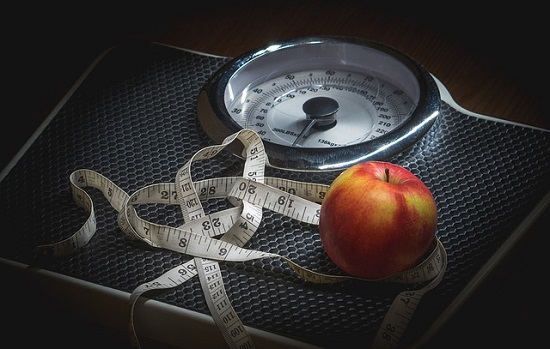If you’ve ever glanced at yourself in a reflection and thought, “I can stand to lose a few pounds,” you are in the company of many people around the world who spend a substantial amount of time and effort to shed the fat. Also, you may share the disappointment of those who lost, but did not maintain the desired weight loss.
In 2014, I faced such a dilemma that resulted in several diagnoses attributed to weight- related chronic metabolic dysfunction. Obesity and metabolic conditions have become so commonplace that rationalizations and public acceptance of taking maintenance prescriptions have become rites of passage in adulthood. Conventional doctors with less than 10 minutes of face-to-face time, offer cryptic instructions to drop the weight and then prescribe the medications advertised on television during the big game or the latest TV drama. Many of us do not question our primary physician’s wisdom and accept the prescription(s) without an exit strategy to correct the decline of health. As a result, we remain attached to a synthetic substance that exchanges the suppression of one symptom with the initiation of a new one. How do we begin to right this slippery slope of inevitability?
Is Weight Loss the Solution?
The great minds of health and fitness have spoken! The cure for weight related diseases is calorie restriction coupled with calorie expenditure – weight loss. The weight loss industry is a $60-billion-dollar cash cow. Prior to the 1950s, there weren’t any health clubs to be found. In modern day American cities, you cannot drive 10 miles in any direction without running into a health club franchise. Weight loss programs are well represented on television commercials and fat loss over-the-counter supplementation remedies can be found in any drug store chain across the country. Despite the weight-loss landscape of proposed opportunities of success, more than two – thirds (68.8 percent) of adults are considered to be overweight or obese. The estimated annual medical cost of obesity in the US was $147 billion in 2008. Somehow, the cure doesn’t appear to lessen the trend of obesity and the growing numbers of weight related chronic conditions.
Weight Loss Equals Energy Reduction + Energy Expenditure, Or Does It?
The concept of weight loss by conventional wisdom is essentially, Eat Less and Exercise More. As a middle aged overweight American, I spent many days feeling quite hungry while eating the Standard American Diet (SAD) that included the occasional drive thru run for breakfast, lunch and/or dinner. In my daily life, there wasn’t much movement outside of walking from my home to my vehicle to go to work and vice versa. Perhaps, these experts had a point. The problems that can materialize from this approach is the driving purpose of losing weight by all means necessary with a limited understanding of long term health and sustainability. There is also a perception from the layman standpoint that weight loss automatically equates to good health. Most weight loss programs call for reducing a person’s daily caloric intake from 3,000 – 4,000 calories daily to 1,200 – 1,500 calories along with an increase in daily activity. If it were only that easy, we’d all be thin and healthy.
Very few people find weight loss success with this method and often end up gaining the original weight back and more (keeping the weight loss industry happy). Why would this happen? Adipose tissue (visceral fat) is an endocrine organ that excretes hormones (leptin) to regulate satiety. It also slows metabolism and increases inflammation in the body in order to create homeostasis by extending hunger to gain the fat back to its previous state.
When insulin is high, brown fat begins to mimic white (visceral) fat to halt the thermogenic response of using energy (food) and begin fat storage. Was this approach supposed to be permanent? Did this approach correct the opiate receptors and dopamine response to the sugar and reset taste receptors that are hardwired from natural selection to be predisposed to quick energy in the form of sweets? Does the dietary intake sustain the weight loss if activity wanes because of injury or illness? Were the nutrient deficiencies on the SAD Diet corrected or did the new dietary intake create new deficiencies? Was the hit to hormone production previously corrected and can hunger and satiety be trusted now? Lastly, was this dietary/exercise solution adopted as a lifestyle change or a plug-in to an imbalanced way of living? Typically the answer to these questions is no, and that is why this approach fails. We cannot diet our way out of a lifetime of bad habits – habits that have negatively altered our chemistry. We have to correct the chemistry.
But Wait, Can’t I Just Detox?
The new trendy “ace in the hole” to sustain such an unsustainable “fix it” dietary change is called DETOX. Fall off the wagon as many times as you like, just plug in a device designed to flush the gut with nutrients to circumvent the pizza binge or sugar attack as a result of derailing. Detox programs can tend to be vegetable or fruit based or both to reset/replenish the body with all the essentials to get one back on track. Interestingly enough, one has to consider that the dietary change and the detox individually are presented as high in nutrition but cannot be sustained long term individually or collectively to reach and maintain the desired weight. The rub is that the health, fitness and diet industry do not own these failures to meet and exceed customer benchmarks. The fallout and blame is often times put on the “will power” of the individual.
Weight Loss and Management are More than Calories In, Calories Out
Looking into the concept of weight management, the term in of itself provides a connotation of an ongoing process. Weight management incorporates an integrative approach that does not begin and end with what you put into your mouth or the intensity in which you move. There are vital aspects of life that directly and indirectly affect weight such as:
- sleep quality
- adherence to circadian rhythms
- stress/anxiety management (reduction of sympathetic system responses to only acute life or death situations)
- emotion management
- physical activity (all throughout the day and not only with a designated workout period)
- prioritization of personal and professional time
- spiritual connectivity /connectivity with the world around you
- financial designations (putting financial matters into perspective with proper balance)
- personal development (neuroplasticity – creating new neuro pathways built for new knowledge, experience and challenges keeps the brain vibrant and young)
- nutritional balance (nourishment of the microbiome alleviating gut flora dysbiosis, cultivating cellular health, optimally functioning mitochondria for ATP production/recycling, adherence to common nutrient deficiencies and overall wellness
Ultimately, the long-term solution is a culture/lifestyle change. What does that mean and how does that differ from the current offerings? When times are tough and difficulties in life occur, resorting to the behavior that contributes to poor health is not advantageous. Those who live within a given culture or lifestyle do not simply follow principles or rules, they actually embody the culture and the lifestyle –which is their identity. When times are difficult, there isn’t any other way to live or to revert. Weight management provides the framework to give your life back and offer a long, active life with weight loss as a consequence of clean living. In that regard, clean living and total health should be both the beginning and endpoints of healthy living. Live healthy and embrace body composition over an arbitrary number on a scale.
We Need Your Help
Hormones Matter needs funding now. Our research funding was cut recently and because of our commitment to independent health research and journalism unbiased by commercial interests we allow minimal advertising on the site. That means all funding must come from you, our readers. Don’t let Hormones Matter die.
Yes, I’d like to support Hormones Matter.
This article was published originally in April 2017.










